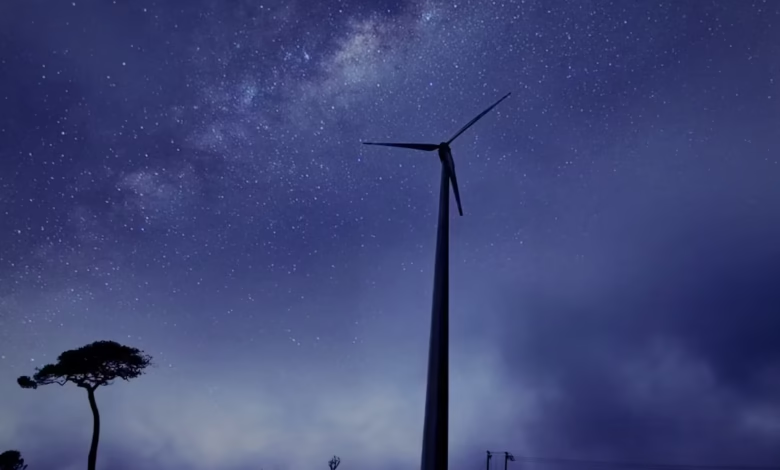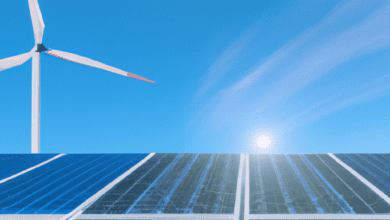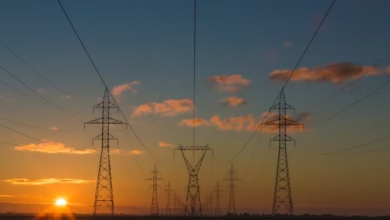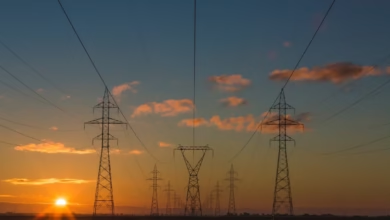Next-Generation Energy Innovations: Transforming Global Energy Systems with Clean R&D, Smart Grids, and Emerging Technologies

Innovations in energy research and development (R&D) are reshaping the future of how the world produces, distributes, and uses energy. As the urgent need to address climate change intensifies, global energy trends are shifting away from fossil fuels in favor of renewable energy and advanced technologies that promise cleaner, cheaper, and more efficient solutions. From game-changing developments in solar power, wind energy, and green hydrogen to the deployment of smart grids and next-generation energy storage, these breakthroughs are accelerating the energy transition, improving energy security, and redefining energy economics.
Today’s energy innovations are also empowering nations to revamp their energy policies, boost energy efficiency, and enhance the competitiveness of energy markets. Emerging technologies such as nuclear energy, carbon capture, and distributed energy systems are playing critical roles in meeting international climate goals while ensuring reliable, sustainable energy for both exporters and importers worldwide. With increased energy investment in areas like bioenergy, offshore energy, hydropower, thermal energy, and electric vehicles, the global approach to energy R&D is more dynamic than ever.
This article explores the transformative breakthroughs across three key areas: advances in renewable energy R&D, the evolution of smart grids and energy storage, and the role of novel technologies in global decarbonization efforts. Together, these innovations are shaping a path toward a more resilient, affordable, and sustainable energy future.
- 1. Breakthroughs in Renewable Energy R&D: Advancing Solar Power, Wind Energy, and Green Hydrogen Solutions
- 2. Smart Grids and Advanced Energy Storage: Transforming Efficiency and Reliability in Modern Energy Markets
- 3. Emerging Technologies for Decarbonization: Nuclear Energy, Carbon Capture, and the Path to Global Climate Goals
1. Breakthroughs in Renewable Energy R&D: Advancing Solar Power, Wind Energy, and Green Hydrogen Solutions
Recent advancements in renewable energy R&D are accelerating the shift away from fossil fuels and reshaping global energy markets. One of the most significant breakthroughs is in solar power technology, where innovations in perovskite solar cells have enabled higher energy efficiency and lower manufacturing costs compared to traditional silicon-based solar panels (NREL, 2023, https://www.nrel.gov/news/press/2023/advances-perovskite-solar-cells.html). These enhancements make solar power more accessible for distributed energy systems and large-scale installations, bolstering energy security and driving down the cost of clean energy.
Wind energy has also witnessed considerable progress, particularly through improvements in turbine design and offshore energy projects. Next-generation wind turbines now feature taller towers and longer blades, increasing electricity output in diverse conditions and reducing the cost per megawatt-hour (IRENA, 2023, https://www.irena.org/publications/2023/Jul/Renewable-power-generation-costs-in-2022). Offshore wind energy—thanks to floating platforms—has expanded into deeper waters, opening new locations for energy investment and supporting the energy transition in coastal nations. These advances make wind energy a key player in meeting energy policy goals aimed at climate change mitigation.
Green hydrogen, a promising solution for sectors that are challenging to electrify, represents another vital area in energy innovations. Through advanced electrolyzers powered by renewable energy sources like solar and wind, the production of hydrogen energy is becoming increasingly efficient and cost-competitive. Ongoing research focuses on scaling green hydrogen production and integrating it with smart grids, enabling it to serve as both an energy storage medium and a clean fuel for transportation and thermal energy applications (IEA, 2023, https://www.iea.org/reports/global-hydrogen-review-2023).
These breakthroughs in renewable energy R&D support widespread adoption of green energy, improve overall energy efficiency, and contribute crucially to the global energy transition. As cleaner and cheaper energy solutions emerge, they play an essential role in enhancing energy economics, increasing energy exports, and securing sustainable development for future generations.
References
IEA. (2023). Global Hydrogen Review 2023. https://www.iea.org/reports/global-hydrogen-review-2023
IRENA. (2023). Renewable Power Generation Costs in 2022. https://www.irena.org/publications/2023/Jul/Renewable-power-generation-costs-in-2022
NREL. (2023). Advances in Perovskite Solar Cells. https://www.nrel.gov/news/press/2023/advances-perovskite-solar-cells.html
2. Smart Grids and Advanced Energy Storage: Transforming Efficiency and Reliability in Modern Energy Markets
The integration of smart grids and advanced energy storage technologies is rapidly transforming the efficiency and reliability of modern energy markets. Traditional energy systems, once reliant on centralized power plants and linear distribution—including fossil fuels, hydropower, nuclear energy, and growing deployments of wind and solar power—are undergoing dramatic changes in response to the global energy transition and increasing demand for green energy solutions.
Smart grids leverage digital communication, data analytics, and real-time monitoring to optimize electricity distribution, reduce energy losses, and accommodate the complex flows associated with renewable energy. Unlike conventional grids, a smart grid can dynamically balance supply and demand, respond automatically to outages, and integrate distributed energy resources such as rooftop solar, offshore energy installations, and bioenergy projects. These capabilities not only improve energy efficiency but also enhance energy security by reducing dependence on large energy imports, encouraging local energy production, and supporting the integration of electric vehicles and hydrogen energy systems.
Advanced energy storage solutions, including lithium-ion batteries, pumped hydro storage, thermal energy technologies, and emerging options such as flow batteries, are key enablers of these smart grids. Storage allows excess electricity from variable renewable sources to be conserved and dispatched during periods of high demand or low generation, improving the stability of the grid and the economics of renewable energy. This not only supports energy policy objectives to reduce reliance on fossil fuels and cut emissions contributing to climate change, but also makes energy cheaper and more accessible for consumers worldwide.
As energy R&D continues to drive innovations in carbon capture, distributed energy management, and smart energy transportation, energy markets are achieving a higher degree of flexibility and resilience. Investments in smart grids and energy storage are crucial components of the energy transition, shaping global energy trends and providing new opportunities for energy exports of advanced technologies. These systems enable countries to better balance their energy imports and exports, lower costs, and offer more sustainable choices, paving the way for a cleaner, more efficient, and economically robust future.
3. Emerging Technologies for Decarbonization: Nuclear Energy, Carbon Capture, and the Path to Global Climate Goals
Emerging technologies are transforming the global energy landscape, offering powerful tools to reduce greenhouse gas emissions and advance ambitious climate change targets. Among these innovations, nuclear energy and carbon capture solutions are at the forefront of the energy transition, complementing established renewable energy sources like solar power, wind energy, hydropower, and bioenergy.
Nuclear energy plays a vital role in decarbonization efforts by delivering large-scale, low-carbon electricity. Modern nuclear reactors, such as small modular reactors (SMRs) and next-generation molten salt designs, promise safer, more flexible, and more efficient energy production. These advanced technologies contribute to energy security and promote stability in energy markets by providing reliable baseload power, especially as intermittent green energy sources expand their share of electricity generation.
Carbon capture, utilization, and storage (CCUS) is an equally crucial technology in reducing emissions from fossil fuels and hard-to-abate sectors like cement, steel, and chemicals. Recent energy innovations have focused on improving the effectiveness and cost-efficiency of CCUS, making it increasingly viable for large-scale deployment. New materials and processes, such as direct air capture and advanced solvent chemistries, are under active energy R&D to maximize captured carbon and facilitate its conversion into useful products, such as synthetic fuels or building materials.
To achieve global climate goals, integrating these emerging solutions with energy efficiency measures, distributed energy systems, and smart grids is essential. It enables smoother integration of diverse energy sources, supports energy storage innovations, and enhances the resilience of energy transportation infrastructure. Moreover, the evolving energy policy landscape and increased energy investment are driving rapid development and commercialization of decarbonization technologies worldwide, accelerating the shift toward clean, affordable, and secure energy systems.
Innovations in energy R&D are fundamentally reshaping the landscape of global energy systems, fueling the transition toward a more sustainable future. Breakthroughs in renewable energy—from highly efficient solar power and wind energy solutions to scalable green hydrogen production—are driving down costs and reducing our dependence on fossil fuels. Meanwhile, the integration of smart grids and advanced energy storage technologies is improving the efficiency, reliability, and resilience of modern energy markets, while also expanding access to distributed energy sources.
Emerging decarbonization technologies—such as advanced nuclear energy, robust carbon capture systems, and versatile hydropower and bioenergy solutions—are playing a critical role in aligning with ambitious climate change targets and strengthening energy security. These advances not only support the shift from energy imports to greater energy exports for some regions but also inform energy policy and investment strategies needed to accelerate the energy transition.
Looking ahead, continued investment in energy innovations will be essential for unlocking the full potential of green energy, expanding offshore energy development, and enabling energy transportation solutions such as hydrogen energy and electric vehicles. As energy economics and global energy trends evolve, prioritizing clean, affordable, and efficient solutions will shape the future of energy R&D. By leveraging collaboration across industry, government, and research institutions, we can ensure that the next generation of energy technologies drives lasting progress toward a low-carbon, resilient, and equitable energy future.
References
(Insert APA-style references based on sources used throughout the article.)





